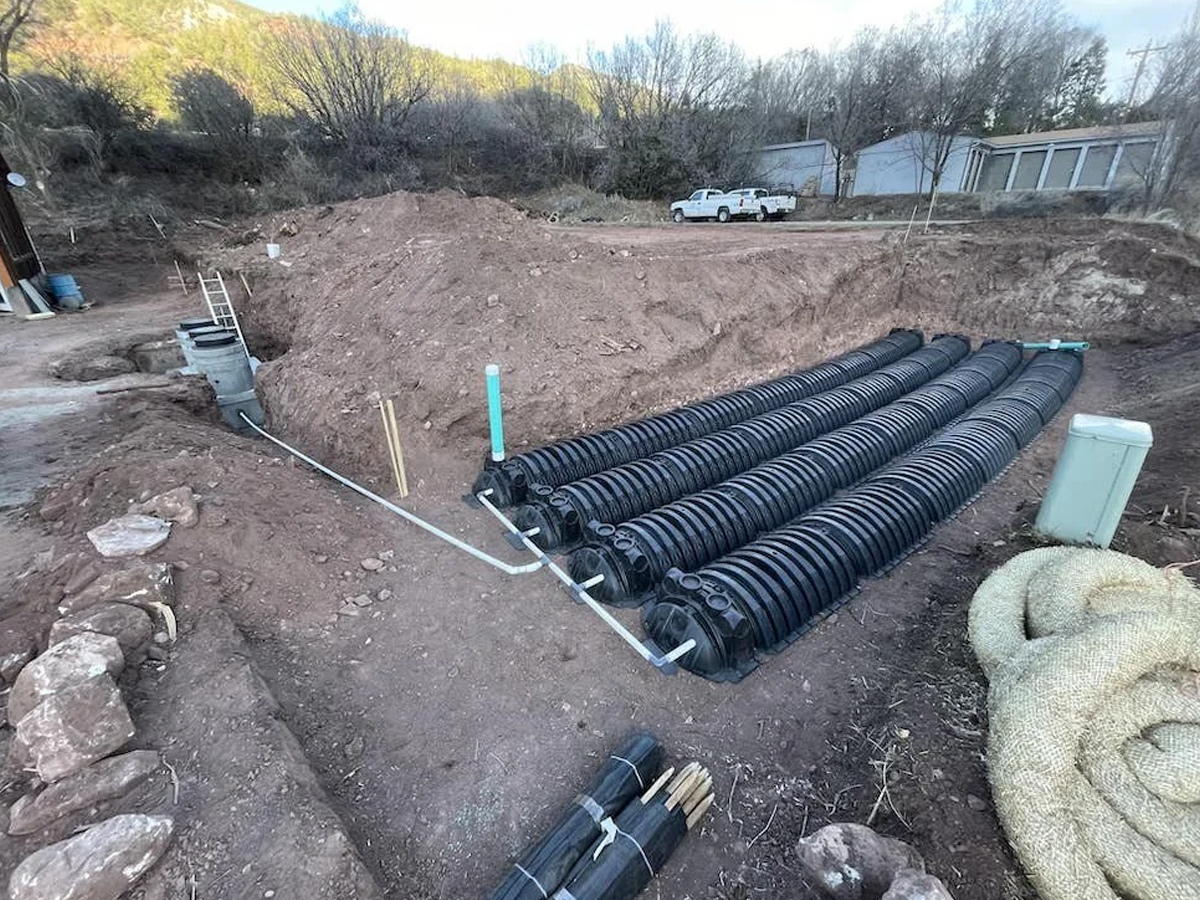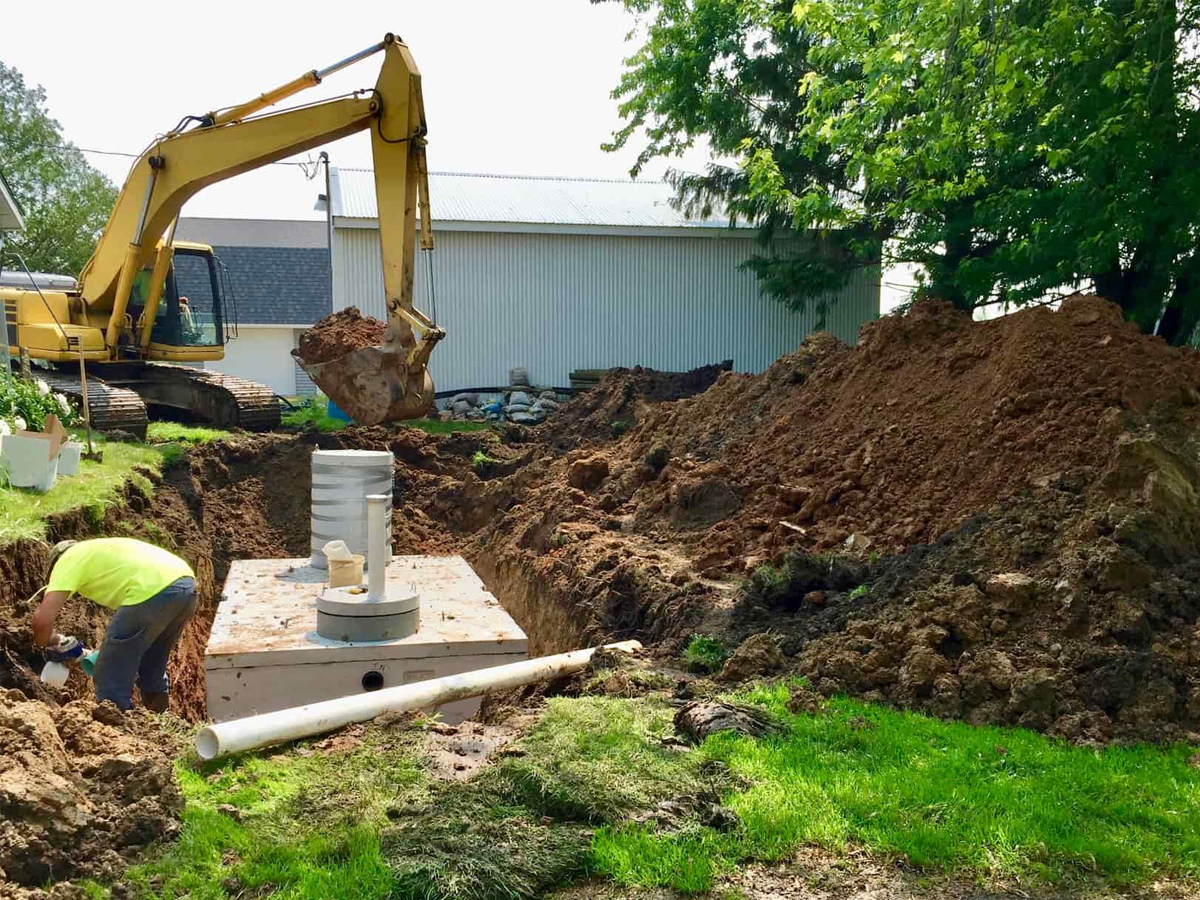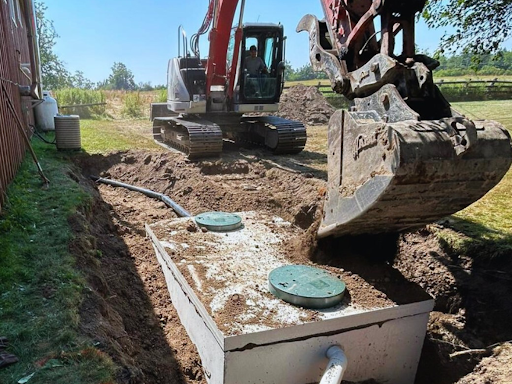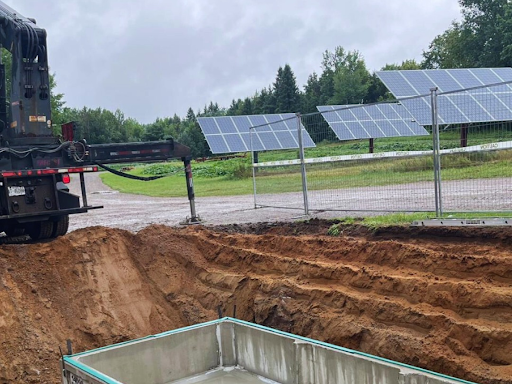What You Need to Know Before You Install Septic System
Installing a septic system is a major investment in your property’s long-term sanitation, safety, and overall value. Knowing what to expect before you begin can save time, money, and future headaches by preventing costly mistakes.
From soil testing and permits to choosing the right system for your property, every step matters. With over a decade of hands-on experience, Birchview Excavating has helped countless homeowners in Douro and surrounding areas install septic system solutions that are efficient, compliant, and built to last. The company’s knowledge of local regulations and soil conditions ensures reliable, durable results that protect both the property and the environment.
The Function of a Residential Drainage System
A septic system safely treats household wastewater, preventing contamination of soil, groundwater, and local water bodies. Systems typically consist of:
- Septic tank: Collects and separates solids from liquids.
- Drainfield or leach field: Allows filtered water to seep into the soil.
- Soil absorption: Natural process that treats the effluent.
Proper installation ensures longevity, reduces repair costs, and maintains local environmental standards.
Determine Your Property’s Suitability
Before installation, consider:
- Soil Testing: A percolation test determines how quickly soil absorbs water. Sandy soil drains quickly, while clay-heavy soil may require a specialized system.
- Site Selection: Keep your septic system at least 30 meters from wells, streams, or lakes to prevent contamination.
- Local Regulations: Douro-Dummer and Ontario municipalities have specific guidelines, including permits, tank size requirements, and setbacks.
Pro Tip: On-site soil testing is essential to confirm that the system will operate efficiently and meet all municipal requirements. Taking this step early helps ensure long-term reliability.
Choosing the Right System
There isn’t a one-size-fits-all septic system, which means homeowners can choose the option that best matches their property and lifestyle.
- Conventional Gravity Systems – Ideal for many standard residential lots, these systems are straightforward, reliable, and easy to maintain.
- Mound Systems – A smart solution for properties with challenging soil conditions, offering flexibility in placement while maintaining strong performance.
- Aerobic Treatment Units – Perfect for households with higher water usage, these systems deliver faster treatment in a compact design and provide consistent, dependable results.
Selecting the right system influences both cost and longevity. A qualified installer can recommend the best solution by considering soil conditions, property layout, and household needs.

How to Install a Septic System with Confidence
Deciding to install a septic system is an important step in improving a property’s long-term value and functionality. With the right planning and professional support, the process can be smooth, efficient, and fully compliant with local regulations. A properly installed system not only manages wastewater effectively but also safeguards the surrounding environment and supports healthy living conditions.
Homeowners benefit from working with certified installers who understand soil conditions, property layouts, and municipal requirements. Clear communication, detailed estimates, and reliable follow-up services all contribute to peace of mind. By taking the right approach, property owners can look forward to dependable performance and peace of mind for many years.
Installation Process Overview
While the process varies by system type, the general steps include:
- Excavation: Clear and grade the site.
- Tank Placement: Install and level the septic tank.
- Pipe and Field Installation: Connect plumbing and lay the drainfield pipes.
- Inspection: Municipal inspection ensures code compliance.
- Backfill & Final Grading: Cover the system and restore landscaping.
Key Considerations Shaping Septic Systems in 2025
- Health and Safety Focus – Designs now place greater emphasis on protecting groundwater and meeting updated public health standards.
- Durability Improvements – Modern materials are built to last longer, reducing the need for frequent repairs or replacements.
- Lower Maintenance Options – Many new systems require fewer service visits, giving homeowners peace of mind and predictable upkeep.
- Cost-Smart Solutions – Advances in system design are making reliable installations more accessible and budget-friendly.
- Community Awareness – Local municipalities continue to promote responsible septic care, helping property owners make informed decisions.
Maintenance Tips for Longevity
Even after professional installation, proper care matters:
- Regular Pumping: Every 3–5 years to remove sludge.
- Water Management: Avoid overloading sinks, toilets, and laundry.
- Protect Drainfield: Do not park vehicles or build structures over it.
- Watch for Warning Signs: Slow drains, pooling water, or odors may indicate issues.
Why Planning Ahead Matters for Septic System Success
Installing a new system isn’t just about meeting today’s needs it’s about ensuring reliable performance for decades. Careful planning helps homeowners avoid costly repairs, protect groundwater, and maintain property value. By considering soil conditions, household water usage, and local regulations before installation, property owners set the foundation for a system that runs smoothly and efficiently long term.
Frequently Asked Questions (FAQ)
1. How long does it take to install a septic system?
Typically 1–3 weeks, depending on system complexity and soil conditions.
2. How much does it cost to install a septic system in Ontario?
Costs vary depending on soil conditions, property layout, and system type. Getting a quote from a licensed installer provides the most accurate estimate.
3. Can I install a septic system myself?
DIY installation is not recommended due to regulations, safety, and potential environmental risks.
4. How often should a septic system be inspected?
Professional inspection is advised every 1–3 years, with pumping every 3–5 years.
5. What are the signs of a failing septic system?
Slow drains, foul odors, sewage backup, or soggy areas above the drainfield indicate problems.
6. Which septic system type is best for poor soil?
Mound or aerobic systems are typically recommended for clay-heavy or poorly draining soils.
Making the Right Choice from the Start
Investing in your home’s wastewater system is a decision that pays off in health, safety, and value for years to come. Working with Birchview Excavating, one of the trusted septic system installation companies in Douro-Dummer, ensures the project meets local regulations, is based on proper soil assessment, and is built to last.
Ready to get started? Reach out at 1511 5th Line, Douro, or visit birchviewexcavating to book your consultation and get reliable guidance before moving forward.










